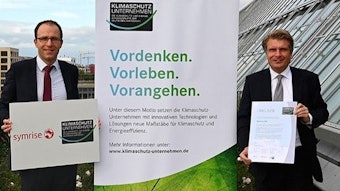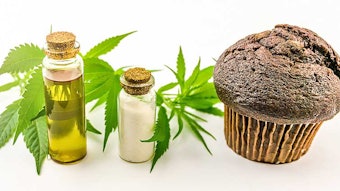Tony O'Lenick and Laura Anderson describe the Green Star Rating (GSR) system, www.greenstarproducts.org, a unique rating system based on the Empirical formulas of materials, developed to calculate the renewable content of a product...
Today’s consumer and formulator have become increasingly aware of the consumption of resources that are not renewable. Products derived from fossil fuels are nonrenewable. This includes products like gasoline, coal, natural gas, diesel and other commodities. "Green" resources are defined as renewable resources, replenished by natural processes. Such renewable products include oxygen, fresh water, timber and biomass and commodities such as wood, paper and leather. Furthermore, alcohol, oils from plants and seeds are considered renewable.
These raw materials are the most environmentally friendly and their use is the most conservative in minimizing negative impact on the Earth. However, these basic products cannot be combined to meet the demands of the consumer without "less-renewable" help. For example, soap can be derived from renewable sources but it generally does not possess the desired properties of a standard laundry detergent. In order to make high performance formulations, some materials that are not strictly renewable are required.
While the concept of products derived from renewable sources is straightforward, the ability for the formulator and the consumer to quantify this value, say, in a given shampoo or other consumer product, is elusive. Given a proper understanding, the consumer and formulator can make better informed, better educated decisions in regards to products that have the best combination of green properties and formulation attributes. In other words, the need of the consumer and the need of the environment can be intelligently determined.
All too often, the determination of the greenness of a raw material or formulation has been more an emotional rather than a scientific decision, and required an all-or-nothing approach to environmental stewardship. Simply put, materials are green or they are not. Unfortunately, the formulation of consumer products that are commercially acceptable require a trade-off in optimizing the performance and greenness because consumers demand many formulation benefits that cannot be achieved with all renewable ingredients. Some nonrenewable products are required. Thus, a systematic approach was sought to provide measurable levels of greenness in a formulation that meanwhile allows for the trade-off of greenness for performance. This quest has resulted in the development of the Green Star Rating (GSR).
GSR provides a process by which a formulator can easily ascertain the eco-friendliness of a raw material and by which a consumer can determine and compare it to the formulations of similar types of products. This process allows the formulation chemist to break a molecule down into eco-friendly portion and a nonrenewable resource portion. The evaluation of this data allows for the generation of a GSR, which is the percentage of the molecule that is based upon green chemistry, divided by 10. Once this number is known, the effect of replacing one ingredient in a formulation with a eco-friendlier compound can be ascertained.
Specifically, if a raw material used in a formulation at 20% by weight has a GSR of 1, and is then replaced with a product having a GSR of 7, the impact on the formulation is (7-1) x 0.20=1.2. This means that much more renewable resources can be used in the formulation so that its consumption will impact less negatively on the environment. This approach allows the formulator to make greener products and allows the consumer to choose more renewable products. In this instance, such products are determined to be such based on their greater percentage of renewable resources; i.e., those with a higher GSR rating.
The GSR is determined by:
1. First determining the Empirical formula for chemical compounds used to make formulated products; leading to
2. the determination of which portions of the molecule are renewable; then
3. determining the percentage by weight of the renewable portion of the molecule; thus
4. Determining the GSR; and
5. Optionally, optimizing the formulation by selecting components with the greatest GSR.
-Tony O’Lenick, Siltech LLC, and Laura Anderson
University of Southern Mississippi
*For more information about this patent-pending rating system, or to calculate the green star rating of a material, visit www.greenstarproducts.org.










